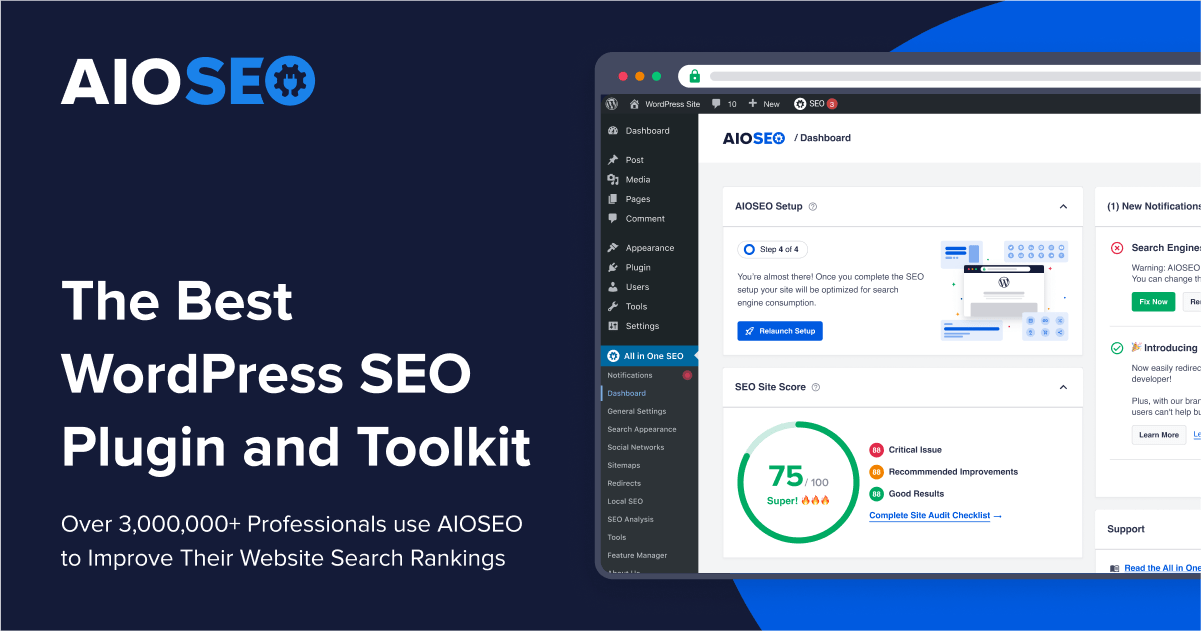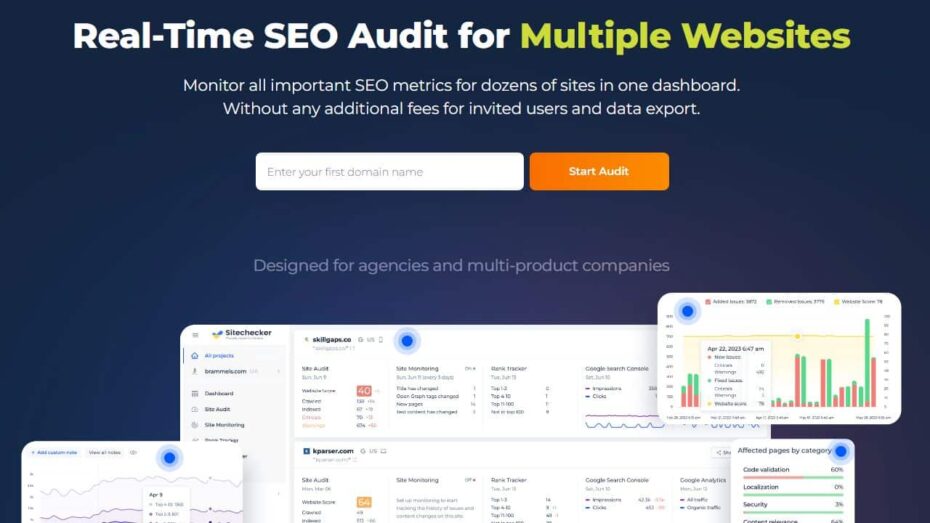Are you struggling to improve your website’s search engine rankings? Wondering how the right SEO keyword selection can make a significant difference? In this introduction, I’ll guide you through the essential techniques for choosing the best SEO keywords that can catapult your site to the top of search results.
Choosing the right keywords is the cornerstone of any successful SEO strategy. From my point of view, it’s not just about attracting more traffic—it’s about attracting the right traffic. This starts with understanding the needs and behaviors of your target audience, which keywords they use, and how they search for information online.
By the end of this introduction, you’ll have a clearer perspective on how to approach keyword selection and why it’s a crucial component of your overall SEO strategy.
Table of Contents
Essential Steps to Identify Your Top SEO Keywords
Choosing the right SEO keywords is akin to selecting the right ingredients for a master chef’s recipe. Each choice can dramatically influence the outcome, just as the right keywords can dictate your website’s success in search rankings.
Starting with a solid foundation in keyword research is crucial for any digital marketer. I believe that this process involves understanding your audience’s needs and how they use search engines to find solutions.
My recommendation is to begin by brainstorming a broad list of potential keywords that reflect your content’s themes and the inquiries your audience might have. Use this list as a starting point for deeper research.
From my perspective, tools like Google Keyword Planner or SEMrush can provide invaluable data on search volume and keyword difficulty, helping you to refine and prioritize your list based on actual search trends.
Most importantly, remember that the relevance of your keywords to your content and audience is paramount. This relevance ensures that the traffic driven to your site is more likely to engage with your content and take desired actions.
My advice is to continually test and adapt your keywords based on performance metrics and updated market research, ensuring they remain aligned with your goals and audience interests.
SEO Services Recommendations
 AIOSEO
|  Sitechecker
|  Squirrly
|
Harnessing Effective Research Tools for SEO Success
When it comes to selecting the best tools for SEO keyword research, I strongly believe that the choice can make or break your optimization efforts. In my experience, comprehensive tools like Squirrly and Moz offer deep insights into not only keyword metrics but also into the broader landscape of your niche.
These tools allow you to see which keywords are driving traffic to your competitors, providing an opportunity to adjust your strategy.
Another key approach is using Google’s own tools, such as Google Trends and the aforementioned Keyword Planner. These platforms offer firsthand insights into the search behaviors of your potential visitors and the seasonality of specific terms.
Here’s how you can start: integrate these tools into your routine checks to keep your strategy responsive and informed by the latest data.
The effectiveness of these research tools lies in their ability to provide real-time, actionable data. I recommend using these insights to craft a keyword strategy that not only targets high-volume terms but also focuses on long-tail keywords that offer lower competition and higher conversion potential. From my perspective, this dual approach maximizes your reach and effectiveness in targeting.
Analyzing Competitor Keywords for Strategic Advantage
Analyzing your competitors’ keywords is a tactic I couldn’t agree more strongly with for gaining strategic advantage. This analysis helps you understand which terms are driving traffic to their sites, and how you might position your content to tap into these established search streams.
My suggestion is to start by identifying your top five competitors and analyzing the common keywords they rank for, but which you might have overlooked.
From my point of view, tools like SEMrush’s Competitive Positioning Map and Ahrefs’ Competitor Keyword Matrix are invaluable in this regard. These tools give you a detailed breakdown of the keywords your competitors are targeting, their ranking positions, and the search volume of those terms. I think this is crucial for spotting gaps in your own strategy.
Another effective strategy is to look at the specific pages that are performing well for your competitors and the keywords they are optimized for. My advice is to consider how you can create better, more comprehensive content that addresses the same topics but adds more value or a unique perspective. This approach not only attracts visitors but also builds your site’s authority and trustworthiness.
Maximizing Impact with Smart SEO Keyword Strategies
In the world of SEO, it’s crucial to not only choose keywords but to choose them wisely. I think of it as finding the right key to unlock the potential of your digital content. This starts with identifying keywords that resonate with both your brand and your target audience. According to SEO best practices, this alignment boosts both relevance and engagement, key factors in achieving high search engine rankings.
From my perspective, the strategic use of keywords involves more than just integrating popular terms. It’s about understanding the intent behind searches. This means delving into the reasons why users are searching for certain terms and aligning your content to meet these needs.
I recommend using analytical tools to gain insights into user behavior patterns, which can guide your keyword optimization strategy.
Most importantly, remember that the landscape of SEO is ever-changing. I strongly believe that to stay ahead, you must adapt your keyword strategy based on ongoing analysis of search trends and algorithm updates. My advice is to keep your content dynamic and flexible, ready to evolve as new opportunities arise in keyword trends.
Tailoring Keywords to Fit Your Target Audience
Understanding your target audience is the cornerstone of effective SEO. I am of the view that the more precisely you can tailor your keywords to fit the specific demographics, interests, and needs of your audience, the better your content will perform. This process begins with detailed audience research, defining not just who your audience is, but also how they interact online.
From my perspective, creating audience personas can be incredibly helpful. These personas should reflect various segments of your audience and include information on their search habits, preferences, and language.
My recommendation is to then map out keyword strategies that align with these personas, focusing on what they are most likely to search for.
My suggestion for tailoring your approach is to also consider the context in which your keywords will be used. It’s not just about what your audience is searching for, but why they are searching for it.
I believe this depth of understanding can significantly enhance the alignment of your keywords with the user intent, thereby improving your content’s visibility and engagement.
The Significance of Keyword Relevance and Search Volume
Keyword relevance and search volume hold paramount importance in the optimization of your website. From my point of view, these two factors determine not only the potential traffic but also the quality of that traffic.
It’s crucial to find a balance—targeting high-volume keywords can drive large amounts of traffic, but they often come with high competition and may not be completely relevant to your audience.
I strongly believe that focusing on relevance should come first. This ensures that the traffic you attract is genuinely interested in your offerings. My advice is to use tools like Google Keyword Planner to analyze the search volume and competition levels of each keyword, guiding you to make informed decisions about which terms to target.
Furthermore, I recommend exploring long-tail keywords. These are more specific phrases with generally lower search volumes but higher conversion rates because they capture more precise user intent.
My impression is that these keywords can be goldmines for attracting qualified traffic, especially for niche markets. Here’s how you can start: integrate these long-tail keywords into your content naturally, ensuring they enhance the readability and relevance of your text to your specific audience.
Advanced Techniques to Refine Your SEO Keyword List
In the ever-evolving landscape of SEO, refining your keyword list with advanced techniques is crucial for staying ahead. I strongly believe that adopting a methodical approach to this process can greatly enhance the effectiveness of your SEO efforts. This starts with regular reviews and updates to your keyword list, ensuring that each term continues to align with your strategic goals and market dynamics.
From my perspective, incorporating data-driven insights into your keyword refinement process is invaluable. Utilizing analytics to track keyword performance helps identify which terms are driving traffic and conversions, and which are not.
This data allows you to make informed decisions about which keywords to retain, replace, or expand upon. My recommendation is to employ A/B testing for different keyword sets to directly measure their impact on your SEO performance.
Most importantly, stay attuned to changes in your industry’s terminology and trends. My advice is to continuously scan for emerging keywords that can capture new search behaviors. By keeping your SEO keyword list dynamic and responsive, you ensure that your content remains relevant and competitive in the digital marketplace.
Utilizing Long-Tail Keywords for Niche Targeting
Long-tail keywords are an essential tool for tapping into niche markets with precision. From my point of view, these keywords, which are typically longer and more specific phrases, can significantly enhance your site’s ability to attract highly targeted traffic. They are less competitive than more generic terms, providing a better opportunity to rank higher in search results.
I recommend integrating long-tail keywords into your content strategy as a way to address the specific needs and questions of your audience. According to my experience, content crafted around long-tail keywords often sees higher engagement and conversion rates because it aligns closely with user intent. This strategy is particularly effective for businesses targeting specialized segments or offering unique products and services.
My suggestion is to utilize keyword research tools to identify long-tail opportunities within your industry. Look for combinations of keywords that closely match the search queries potential customers might use.
Here’s how you can start: analyze search query reports to see exact phrases used by searchers, then craft your content to answer these queries directly and comprehensively.
The Role of Semantic Search in Enhancing Keyword Choice
Semantic search technologies have transformed how search engines understand and respond to user queries. This shift emphasizes the importance of context and intent over mere keyword matching.
From my perspective, adapting your SEO strategy to leverage semantic search can greatly improve how effectively your content reaches the intended audience.
I believe that by focusing on the semantics around your keywords, you can create richer, more informative content that search engines can interpret more effectively. This involves using related terms, synonyms, and contextually relevant phrases that help define and support your primary keywords.
My advice is to build content that answers questions, solves problems, and provides value, which in turn enhances the relevance and authority of your pages in search results.
According to my experience, implementing semantic SEO involves more than just optimizing for specific keywords. It’s about creating a thematic consistency throughout your content that mirrors how natural language processing works.
My recommendation is to use tools that analyze content for semantic richness and provide insights into how well your content aligns with related search queries. By doing so, you not only enhance your keyword choice but also improve the overall user experience, making it more likely that visitors will engage with and return to your site.
Tracking and Adapting Keywords for Continued SEO Success
In the dynamic world of SEO, the ability to track and adapt your keyword strategies is essential for long-term success. I am of the view that an agile approach to SEO, which incorporates continuous monitoring and adjustments, can significantly enhance your website’s performance in search rankings. This involves not just observing which keywords drive traffic, but also understanding how they contribute to your business goals.
From my perspective, setting up robust tracking systems using tools like Google Analytics is crucial. These tools provide deep insights into how users are finding and interacting with your site.
I recommend setting specific goals and conversion metrics in these tools to see the real impact of your chosen keywords on your business outcomes. This data becomes the backbone of your decision-making process.
Most importantly, adapting your keyword strategy based on performance metrics should be an ongoing process. My advice is to regularly review keyword effectiveness and search trends to ensure your content remains relevant and competitive. By doing so, you not only maintain but also grow your search engine visibility, keeping your site pertinent in the ever-evolving search landscape.
Implementing Keyword Performance Metrics
Understanding and implementing keyword performance metrics effectively is key to refining your SEO strategy. From my point of view, tracking the right metrics can give you a clear picture of what’s working and what isn’t.
I strongly believe that metrics such as click-through rate (CTR), conversion rate, and search engine ranking positions (SERPs) are fundamental indicators of keyword success.
My suggestion is to start by setting up keyword-specific tracking in your analytics platform. This allows you to monitor the performance of each keyword in terms of driving traffic and conversions. According to my experience, paying attention to these metrics helps you optimize your content strategy and budget allocation more efficiently.
Additionally, I recommend utilizing heat maps and user interaction analytics to understand how visitors interact with your content. My impression is that these insights can reveal whether your keywords are effectively capturing user interest, leading to more targeted optimizations.
Continuous Keyword Optimization for Sustained Visibility
For sustained visibility in search results, continuous keyword optimization is crucial. I believe that the SEO landscape requires constant attention and adjustment to maintain and improve search rankings.
This includes updating your keywords to match evolving search trends and user behaviors. I recommend integrating new, relevant keywords into your content regularly to keep it fresh and aligned with current search intent.
From my perspective, revisiting old content and refreshing it with updated keywords and information can also play a significant role in boosting your SEO. It’s not just about adding new content; it’s about ensuring all content remains relevant and optimized.
Here’s how you can start: periodically review your top-performing pages and update them with new keywords and current data to reinforce their rankings.
Lastly, my advice is to foster a culture of SEO experimentation within your team. Testing new keywords, different content formats, and SEO tactics can uncover valuable insights and lead to improved strategies.
My intention is to emphasize that SEO is not a set-it-and-forget-it activity; it’s an ongoing process that demands creativity and persistence for true success.






